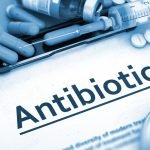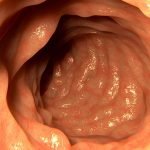It’s no secret that the US medical profession tends to be hysterectomy happy. A recent article from CNN reveals that as many as one-third of all American women have a hysterectomy procedure before reaching age 60. That’s more than double the rate in Norway and just shy of double the rate in England. In fact, the hysterectomy has become the second most common surgery for women in the US, after Cesarean section. And of those many millions of women who go through the operation, about two-thirds don’t need to — that’s what the experts now say, in retrospect.
There’s been lots of press over the years about overeager doctors who reel in big bucks by prescribing hysterectomies when other, less invasive options exist. Many women have hysterectomies to eliminate fibroid (non-cancerous) tumors of the uterus — which, critics claim, is like killing a flea on the driveway by running it over with a Hummer. Outraged opponents continue to agitate about doctors playing with women’s lives in order to make a profit, but they still focus on surgical solutions — albeit less invasive (and less expensive) than a hysterectomy. Two such options are the endometrial ablation and the robotic laparoscopic myomectomy. And yes, these procedures are less damaging to the body, but they share one important flaw with their more brutal cousin. They are designed merely to make symptoms go away; they do nothing to address the underlying problem — which still exists, even after surgery.
The questions that really need to be asked are:
- Why do so many women have fibroids and uterine complications in the first place?
- And can uterine problems be headed off at the pass — thus avoiding surgery?
In Lessons from the Miracle Doctors, I explore how problems related to fibroids, endometriosis, excessive cramping, uterine bleeding, menopausal symptoms, and other pre-hysterectomy conditions typically begin with an overabundance of estrogen. The body naturally produces estrogen in manageable amounts, but we are also constantly exposed to massive amounts of synthetic, petroleum-based xenoestrogens in our food (injected into meat and dairy animals to promote growth), water (industrial runoff), and packaging (all plastic containers and wraps). It is impossible to avoid these estrogen mimics, which are potent in amounts as small as a billionth of a gram.
At one time, our diets afforded some protection. Fruits and grains and vegetables (in their natural state) provide low-action phytoestrogens for the body. These low-action estrogens fill the body’s estrogen receptor sites — making them unavailable for use by the more potent estrogens — both natural and synthetic. Unfortunately, today’s diets are dominated by processed foods, which are stripped of these beneficial phytoestrogens. The net result is that virtually all of the body’s receptor sites are ready and waiting for the far more intense estrogens that have been unleashed into our environment. If that isn’t bad enough, the medical/pharmaceutical community compounds the problem (all puns intended) by dosing up every woman they can get their hands on with synthetic estrogens as found in birth control pills, PMS prescriptions, and hormone replacement therapy. And to what effect?
Estrogen promotes cell growth. It is the estrogens, for example, that stimulate the buildup of tissue and blood in the uterus at the start of the menstrual cycle. But too much estrogen can produce unrestrained cell stimulation. When cells reproduce without constraint, problems such as endometriosis, fibroids, cramping, weight gain, and various cancers can result — ultimately leading to surgical intervention.
Ah, but if you break the cycle, you don’t have to go down the surgical road. As it turns out, there’s a relatively simple answer.
Nature’s natural balancer to excessive estrogen in the body is natural progesterone, and supplementation with natural progesterone has NO known side effects. It is best utilized by the body when administered transdermally with a skin creme that contains approximately 500 milligrams per ounce of natural progesterone. And natural progesterone has additional benefits, including possible protection against endometrial, prostrate, and breast cancers; reduced osteoporosis, and reduction of symptoms of menopause or PMS.
For more information on xenoestrogens and natural progesterone cream, check out Chapter 10 of Lessons from the Miracle Doctors. You can download a free copy at /detox/free-natural-health-book-lessons-miracle.
- And while you’re at it, it will do you no harm minimize your use of plastic food containers, wraps, and water bottles as much as possible, as these leach xenoestrogens, particularly when heated.
- Avoid dairy products, meats, and fish that may have been exposed to hormones to stimulate growth.
- Eat organic vegetables, fruits, and grains in abundance to help block the more potent synthetic estrogens from gaining access to your cell’s receptor sites..
- And think twice before accepting prescriptions from your doctor based on synthetic versions of either estrogen or progesterone. They only add to the problem.












I am convinced that someday mankind will look back on the past half century of the failed war on cancer and the barbaric treatment methods of trying to cut out, burn out or poison out the symptoms in the hopes the treatment will kill the cancer cells before it kills the patients as the true dark ages of medicine,
The way to prevent and cure cancer, as well as other disease, has been here all along: Nature. But there is little profit to be made to tell a person to eat a healthy diet, get fresh air, water and sunshine, exercise a bit and endeavor to eliminate stress – or to take advantage of natural botanicals that can eliminate cancer and boost the immune system.
For generations we and our doctors have been brainwashed to believe that healing only comes from mainstream treatments and patented drugs which only manage illness and have side-effects that lead to new conditions that require yet more drugs in a never ending cycle so that. as you say in your wonderful book “”Lessons from the Miracle Doctors””, by the time we reach 65 we take an average of 15 prescribed and over the counter medications daily when it all began with one or two conditions that could have been prevented and/or treated naturally.
Here are a couple of my own articles about nature and cancer:
“”Modern Man versus Nature in Treating Cancer””
http://www.tbyil.com/MMvsNature.htm
“”A Natural Anti-Cancer Protocol””
http://www.tbyil.com/anticancer.htm
Live long, live healthy, live happy!
“”Leave your drugs in the chemist’s pots if you can cure your patient with food. Nature is the curer of disease.””
– Hippocrates, 420BC
“”Nature alone can cure disease. Doctors cannot heal. They can only direct the sufferer back to the pathways of health. Nature alone can create, and healing is re-creation.””
– Dr. William Sadler
Watch the short video "Female
Watch the short video "Female Anatomy: the Functions of the Female Organs" at hersfoundation dot org/anatomy. Say no 'til you know.
I have a large Fibroid and have tried several things to rid it….I have tried the enzymes and chick weed as well as Soy Milk …Can you tell me anything else I can do …
Thanks,
Fran [email protected]
As the blog says, you might want to check out natural progesterone. Transdermal progesterone has been known to dissolve fibroids in 90-180 days. /anti-aging/barron-report-hormonal-balancing-progesterone
Where do you find this
Where do you find this natural progesterone cream?
Product recommendations can
Product recommendations can be found at http://www.jonbarron.org/natural-health/program-dietary-supplements-product-recommendations